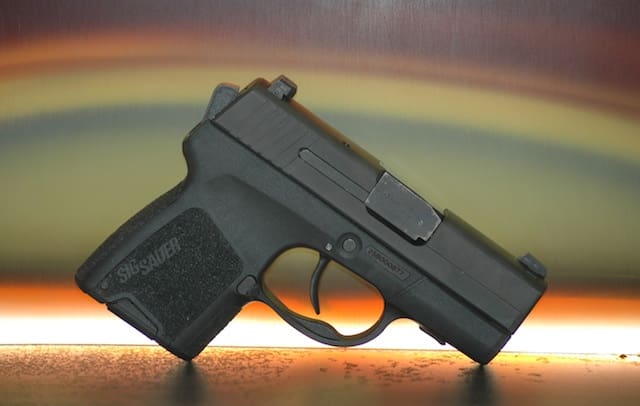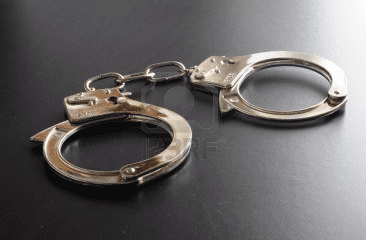[The following was written by attorney Lisa J. Steele for nacdl.org. It is republished here with the author’s permission. Click here for part 1.]
Perception, Memory, and the Eyewitness
A lengthy discussion about eyewitness memory and perception is outside the scope of this article. The nature of a self-defense situation generally means that the client and the witnesses will not be able to accurately recall what happened. This is normal. Self-defense situations develop very quickly. Bystanders who were not paying attention to the situation may not take notice until after a loud noise or sudden movement. Thus, they may miss important cues that led the client to believe he or she was in imminent danger. Once a weapon has been displayed, weapon focus will cause the witnesses to watch it, and perhaps miss other important events during the incident . . .
Eyewitnesses may significantly overestimate or underestimate distance and event duration. They may get the sequence of events wrong. Unfortunately, the jury may regard the misperceptions of neutral witnesses as more persuasive than the client’s testimony, or even regard conflicts between the testimony of the client and the witness as a sign that the client is lying. The attorney needs to keep in mind the usual issues of stress, lighting, distance, contrast, and event duration when questioning witnesses. Here, as in eyewitness identification cases, a certain witness is not necessarily an accurate one.
When the client is under life-threatening stress, he or she cannot calmly engage in a conscious, deliberative, and analytical reasoning process. Instead, the client will react automatically, which will produce fragmented memories and reasoning based on past experience, intuition, and emotion. Simple habits are easier to follow than complex responses that require integrating multiple thought processes. This automatic reaction is one reason why it is important to find out whether the client has had any self-defense training and talk to the client’s trainer.
Some authors suggest that the stress-triggered hormones affect the client’s memory, and that a client can provide more accurate statements if he or she waits 24 hours and gets some sleep before giving a formal statement.5 The attorney should ask about the investigating department’s officer-involved shooting policy. If, like New York City, it requires that officers be given 24 hours and bed rest before giving a statement, and the client was pressured to give a statement sooner, the attorney may have good fodder for cross-examination.
The second problem the attorney will encounter with witnesses and the client is the effects of after-acquired information on memory. The attorney should look very carefully at the timing of interviews, statements, media reports, and other information which may cause the memory of a witness to change in order to match after-acquired knowledge. The new memories, while they may not be more accurate, effectively overwrite the original memory. The attorney should explain how suggestion can cause a memory to be inaccurate. Again, the attorney needs to show the jury that witness confidence is not an accurate predictor of witness reliability.
Hindsight bias is related to the after-acquired knowledge problem. A witness who knows the outcome of an event may retroactively feel that the outcome was obvious. A witness who learns after the event that the aggressor was unarmed or had only drawn a wallet from his pocket may retroactively believe that he clearly saw that no weapon was present and that the defender overreacted.
Some prosecutors may argue to the jury that the details of the incident have been “indelibly etched” into the memory of the witness and can be relied upon like a videotape. (The implicit corollary is that the client also has this etched memory, but is lying.) Often, the prosecutor will refer to the jurors’ own memories of the Kennedy Assassination, Challenger explosion, or Twin Towers collapse. The “indelible memory for shocking events” theory is widely believed, but generally considered untrue by memory experts. The attorney may need to explore this belief in voir dire and be ready to challenge any prosecutorial closing argument making this claim.
Physical Evidence — Distance and Wounds
The prosecutor will also try to reconstruct the scene using photographs, blood spatter analysis, sketches, and possibly analysis from physicians, medical examiners, and gunshot residue experts. For the most part, the attorney should confirm that photographs accurately reflect the scene and, where possible, the lighting. Sketches should be to scale, with evidence locations triangulated from fixed points. If the attorney can determine where the client was standing when the incident occurred, it may be useful to have photographs taken from his or her point of view to show what escape routes the client could have reasonably perceived. Even where retreat is not legally required, the jury may be more sympathetic to a defendant cornered by an aggressor.
Carefully look at statements and police reports about who had access to the scene before it was sealed and photographed. If a bystander or first responder tripped over a body in a dark scene, for example, a reconstruction expert may mistake the resulting spatter and footprint for a vicious kick delivered by the client. Bullet casings may roll or be accidentally kicked. Weapons may be moved (or removed) by bystanders or the aggressor’s friends. Doors which were closed and locked when the client was facing the aggressor may be opened to help police find the right entrance or to let bystanders leave. Lights that were turned off will likely be turned on during photography; additional lighting may also be used by the crime scene technicians.
If a medical expert is giving an opinion about entry and exit wounds or how the aggressor was standing based on the wound channel, the attorney needs to carefully explore the basis for the expert’s opinion. Be skeptical about testimony by emergency room doctors. A 1994 study showed that hospital trauma specialists misinterpreted the number of gunshot wounds and mis-identified entry and exit wounds in 52.2 percent of cases studied (i.e., slightly worse than if they had guessed randomly).6 The attorney should ask specific questions about how the expert was trained to identify such wounds and what physical findings and documentation support the expert’s conclusion.
If a firearm was used and its muzzle was within two to three feet of the victim, an expert can estimate the distance between the muzzle and the victim by examining the wound and the area around it for gunshot residue. The medical examiner can testify about his or her findings and the general characteristics of contact, near contact, intermediate range, and distant gunshot wounds. However, the actual distances can vary significantly depending on the type of firearm and ammunition. If the firearm has been recovered, a firearms identification expert may make muzzle-to-victim range determinations by using photographs and measurements of the wounds and then by firing test ammunition at white blotting paper.
The attorney should not accept an expert’s bare statement that he or she did not find evidence of gunshot residue if that finding conflicts with the client’s version of the case. Ask specifically what tests were done to find residue, and what factors could have caused a false negative on those tests.
Seemingly Excessive Force — the Reaction Gap
Another set of troublesome facts involves a client who seemingly used excessive force by shooting an aggressor after the aggressor fell, began to run, or turned away. Explaining these facts to the jury involves explaining reaction time.
The client must, by the logic of self-defense, react to the aggressor’s threatening actions. Unfortunately, reaction is slower than action. Self-defense trainers call this “the reaction gap.”8 The attorney may need to explain to the jury the differences between anticipated stimulus and simple reflexive response; unanticipated stimulus and simple reflexive response; and unanticipated stimulus and complex response.
Drawing and firing a handgun takes time. A client who waits to see whether the aggressor (who is making a sudden movement) is actually drawing a gun will likely be shot before the client can react. A client who waits until a charging aggressor is within 20 feet of her to draw a gun is likely to be tackled before she can fire. Moreover, a client who pauses between each shot — to see if the aggressor is surrendering, falling down, or trying to turn and flee — risks being killed during those pauses by an aggressor who has not yet given up.
Distance
With the reaction gap in mind, distances that seem large in a self-defense case suddenly look objectively reasonable. Self-defense experts teach their students that an aggressor, armed with a knife or fist, can close a distance of 21 feet between the aggressor and the student in 1.5 seconds, which is faster than the student can draw and fire a handgun. This is called the Tueller drill.
Number of Wounds
Human beings are, fortunately, hard to kill instantly. A person can incur a single fatal gunshot wound and walk, run, or continue an attack. A person can also be fatally stabbed in the heart, get in his car, and drive away. In a self-defense situation, the client’s lawful goal is to stop the aggressor from threatening him. The client should not be trying to kill the aggressor. If the aggressor falls down, surrenders, or runs away, the client cannot continue the fight. Stopping an aggressor may take one blow or several blows. And the client will not have time during the midst of a chaotic struggle to stop after each blow or shot to evaluate its effects. This is particularly important if the aggressor is armed with a firearm, which takes little effort to fire, even after serious wounds.
Some courts imply that firing multiple shots is evidence of intent to kill or is a sign of excessive force, which disqualifies the defendant from self-defense. Look carefully at police use-of-force cases. The jury needs to understand how fast shots are fired and how long it takes the defender to realize that the threat is over. Appellate courts can hardly be faulted for their reasoning when they are rarely presented with testimony and studies explaining reaction times.
An attorney will find that in many cases, police officers have to fire many bullets before the suspect is stopped from continuing dangerous behavior.10 Police officers also fire many more shots than actually hit — 42 to 80 percent of shots fired miss at typical ranges of zero to 10 feet.11 Police officers cannot be sure, until the aggressor falls down or flees, whether they have even hit the aggressor. The same problem confronts clients who are not law enforcement officers. The client may have perceived a need to fire multiple shots until he saw that the aggressor had fallen or surrendered and had time to react to that action.
Wounds in the Back
This is a very troubling fact for many juries. The medical examiner may find that the client has shot (or stabbed) the aggressor in the side or back, leading to an argument that the client shot the aggressor while he or she was trying to flee. A moderately healthy person can turn his or her torso 180º in .53 seconds and can turn his or her entire body 180º in .667 seconds.12 This is very close to the amount of time it takes a trained police officer to fire a handgun. Thus, it is possible that at the moment the client began to fire at the aggressor, the aggressor was facing him. By the time the client completed firing the handgun, the aggressor had turned around, resulting in a shot in the back.
[Click here for Part 3 of this series. Click here for Part 1]





Well written and plenty to chew on.
It should also be pointed out, that an individuals perceived ability to defend themselves with out the gun, may be taken into account. My 5’4″ petite wife, will likely recieve the benefit of the doubt if she were to draw and fire her pistol at a male agressor of almsot any size, armed or unarmed. Her 6′ 4″ 275lb husband, not so much.
Also, it isn’t at all uncommon for a police officer to successfully justify use of excessive force on unarmed assailants. Because there are plenty of examples where officers were overpowerd by suspects and had their own weapon turned against them.
I like the concept of using police guidelines, expecially the 24 hrs rest before giving a statement. However … I would think that police should be held to a higher standard that civilians in these types of cases. Thus any protections (or benefit of doubt) they receive should be doubled for the rest of us.
Again, good article.
I’m probably getting ahead of the article, but I was wondering about reloaded ammo. Some things I have read say no to reloads. Does anyone have any info on how courts and juries have reacted to reloads? The idea I got from one article is that the reloading records of the shooter are not admissible for determining certain aspects of the ballistics. Also, another inference was that reloaded ammo was somehow more evil-er and deadlier than factory loads.
Anybody know if any of that is true or is it just tacticool article writing?
any info on how courts and juries have reacted to reloads?
No, but I’ve heard a lawyer who carries opine that factory ammo e.g. something popular for police use is better because:
(1) it’s probably more reliable than a hand load;
(2) it won’t give an adversarial lawyer something else to whine about.
In a similar vein I read a story where a self defense shooter used a 10mm pistol and got into trouble because of its “excessive” power.
I can see (2), but (1) not hardly.
I guess if you’re buying reloaded ammo from some yahoo, but my reloads perform better than the factory stuff I shoot occasionally.
“In a similar vein I read a story where a self defense shooter used a 10mm pistol and got into trouble because of its “excessive” power.”
So I’m assuming firing my .44 magnum with JHP would definitely get me in deep shit then.
I was thinking the same thing about my 45 with 230 grain JHPs. If that is an issue perhaps it is better to carry the same firearm that it is used by the LE community. It would be hard to argue that a SiG 40 S&W is too powerful since it is the same same weapon used by all Federal LEAs
.45s are carried by lots of cops and are really not all that powerful on paper when comparing ft/lbs of energy.
Handloaded ammo, in my view, is just one more uncertainty you might have to deal with/explain. Same with modifying your guns excessivly. Sights and grips is one thing, but reducing, or eliminating safety features is not a good idea.
If someone doesn’t like my ammo, they can talk to Winchester, if they don’t like my gun, they can talk to SIG, (or S$W, or who ever). They built it.
The point that Attorney Steele makes about rear and side entrance wounds is very instructive. I can tell you from experience that a shot fired at an opponent’s frontal area can easily result in an entrance wound to the back. I call this the flinch reaction. The BG sees a gun trained on him and swivels — he flinches — just as the shooter presses the trigger. The result is an entrance wound in the back, which will be used by the prosecutor to create a case that the BG was executed, not shot in self-defense. Fortunately, there’s good science to prove the flinch reaction, and juries are getting it.
Great article!!!
Comments are closed.